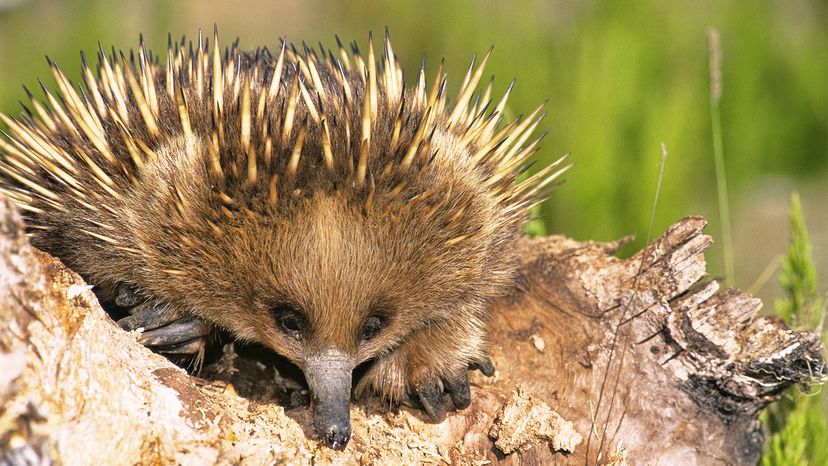The echidna, also known as a spiny anteater, is a fascinating and unusual animal that is native to Australia and New Guinea. It is one of only two mammals in the world that lay eggs, the other being the platypus. In addition to its unique reproductive system, the echidna has several other characteristics that make it stand out from other mammals.

The echidna is covered in sharp spines that help protect it from predators. Its spines are made of keratin, the same substance that makes up human hair and nails. When threatened, the echidna will curl up into a ball, exposing only its spines to deter predators.
Another unique feature of the echidna is its long, sticky tongue. The echidna’s tongue is up to 18 cm long and can be extended rapidly to capture insects, its primary food source. The echidna does not have teeth, so it grinds up its food with spines in its mouth instead.
Echidnas are also known for their ability to regulate their body temperature. They can enter a state of torpor, lowering their body temperature and metabolic rate to conserve energy during times of food scarcity or extreme temperatures. This adaptation allows echidnas to survive in a variety of environments, from deserts to rainforests.

Despite its unique characteristics, echidnas are often overshadowed by other Australian animals such as kangaroos and koalas. However, they play an important role in the ecosystem as insectivores and seed dispersers. They also have cultural significance to Indigenous Australians, who have used their spines for various purposes for thousands of years.
Unfortunately, echidnas face threats from habitat destruction, predation by introduced species, and road accidents. Conservation efforts are underway to protect the species, including initiatives to reduce roadkill and monitor populations.
In conclusion, the echidna is a remarkable mammal that is truly in a category all its own. From its ability to lay eggs to its spines and sticky tongue, the echidna is a fascinating creature with unique adaptations. By raising awareness of this species and taking steps to protect it, we can ensure that the echidna continues to thrive in the wild.








